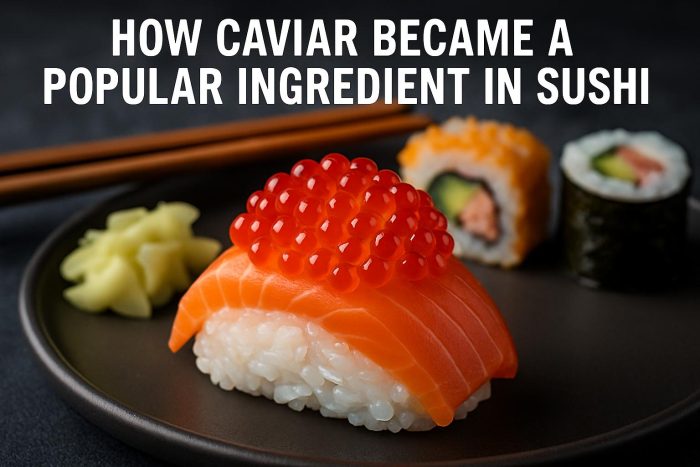The Rise of Caviar in Sushi
Caviar, traditionally associated with Russian or Iranian cuisine, has become a sought-after ingredient in contemporary sushi. This shift in culinary trends has been influenced by several factors, including increased global trade, cultural exchanges, and evolving taste preferences.
Understanding Caviar
Caviar refers to the salt-cured roe of sturgeon, a term that has widened over time to include roe from other fish such as salmon (known as ikura), capelin (masago), and flying fish (tobiko). The roe’s unique texture and flavor profile add complexity and richness to sushi, making it an attractive addition for chefs looking to enhance their offerings.
The Early Adopters
Caviar first made its appearance in sushi during the 20th century as sushi chefs around the world experimented with new ingredients. Particularly in the United States, sushi restaurants began embracing caviar as part of their fusion dishes. This innovation led to unique combinations such as the California Roll with masago, enhancing both visual appeal and taste.
Why Caviar Is Popular in Sushi
The popularity of caviar in sushi can be attributed to a few key reasons.
Enhanced Flavor: Caviar introduces a briny, umami-rich taste that complements the delicate flavors of other sushi ingredients. This interaction enhances the overall palate experience for diners.
Visual Appeal: Caviar’s vibrant colors, ranging from the lush red of salmon roe to the bright orange of tobiko, add a visually striking element to sushi platters, drawing the eyes of both seasoned enthusiasts and new diners.
Prestige and Luxury: The inclusion of caviar elevates sushi to a luxury status, often associated with celebrations and fine dining. This aligns with the growing consumer trend towards gourmet and premium food experiences.
Global Influence and Availability
The globalization of cuisine has significantly contributed to the availability and popularity of caviar in sushi. Advances in aquaculture have made caviar more accessible and sustainable, allowing chefs from different regions to integrate this ingredient into their culinary creations. Moreover, international trade agreements have facilitated the widespread distribution of both high-end and more affordable varieties of caviar.
Impact on Sushi Culture
The integration of caviar into sushi has not only diversified the flavor profiles available but also led to innovations in sushi making. Chefs have been inspired to experiment with a fusion of traditional and modern styles, blending old-world luxury ingredients with the revered art of sushi-making. This experimentation contributes to the evolution of sushi cuisine, making it more dynamic and appealing to contemporary tastes.
Future of Caviar in Sushi
As sustainability becomes a growing concern within the culinary world, the production and sourcing of caviar for sushi are likely to focus on ethically farmed and environmentally friendly practices. Chefs and consumers alike are showing a preference for sustainable options, which may influence future trends in sushi ingredients.
In conclusion, caviar’s journey from exclusive luxury to a staple in sushi represents an intersection of global culture, innovation, and culinary artistry. Its continued evolution will likely reflect changes in consumer preferences and sustainability practices, shaping the future of sushi around the world.

